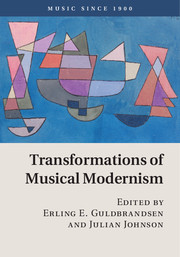Book contents
- Transformations of Musical Modernism
- Music Since 1900
- Transformations of Musical Modernism
- Copyright page
- Contents
- Music examples
- Notes on contributors
- Book part
- Introduction
- Part I Rethinking modernism
- Part II Rewriting modernism
- Part III Replaying modernism
- Bibliography
- Index of names
- Index of subjects
- References
Bibliography
Published online by Cambridge University Press: 05 November 2015
- Transformations of Musical Modernism
- Music Since 1900
- Transformations of Musical Modernism
- Copyright page
- Contents
- Music examples
- Notes on contributors
- Book part
- Introduction
- Part I Rethinking modernism
- Part II Rewriting modernism
- Part III Replaying modernism
- Bibliography
- Index of names
- Index of subjects
- References
- Type
- Chapter
- Information
- Transformations of Musical Modernism , pp. 319 - 335Publisher: Cambridge University PressPrint publication year: 2015



